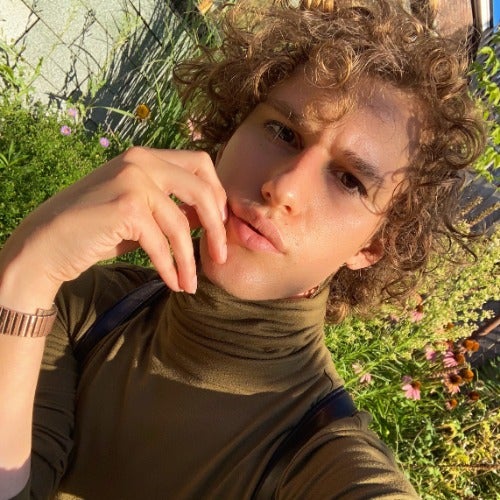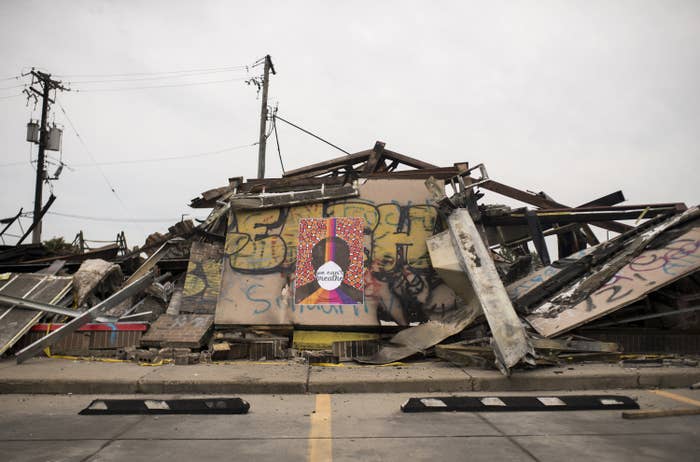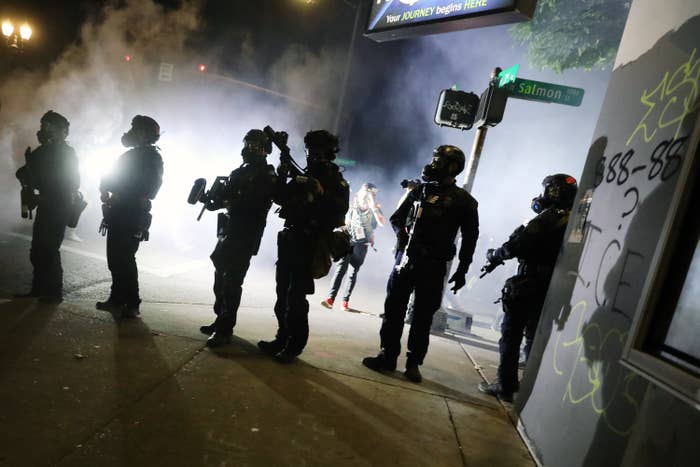To make something like FFS truly accessible — and to give trans people true agency over it — requires completely reimagining the capitalist medical system.

Alex V Green BuzzFeed News Contributor
Writer and critic based in Toronto.
Posted on July 28, 2020,
In an essay for Esquire, writer Harron Walker describes an unexpected impact of COVID-19 on her transition. At the beginning of March, her facial feminization surgery was deemed necessary by three separate medical providers. But less than a week before her appointment, the hospital suddenly designated it an “elective” procedure — along with many other transgender surgeries that were postponed, some of them indefinitely, due to the pandemic.
Facial feminization surgery, or FFS, describes a set of complex procedures designed to “feminize” the face. The concept and treatments were developed with transfeminine patients in mind in the 1980s, led by a San Francisco–based surgeon who devised measurements for a “normal” female appearance by surveying anthropological skeletal records. Despite its origins, FFS as it’s performed today is very similar to other facial procedures adopted by cisgender women. The surgery changes the size of bones and the distribution of fat to bring a patient’s appearance more in line with conventional ideas of beauty, femininity, and “normalcy.”
FFS has changed substantially since its initial development. Different practitioners, aesthetic preferences, and ideas about what it means to be beautiful, feminine, and normal have all impacted the field, making it increasingly popular and desirable for transfeminine people with varied transition goals. Among many of them, it is considered a matter of life or death, or, at least, a gateway to a much better quality of life. The procedure makes the difference between someone passing and someone being targeted for anti-trans harassment, and it helps alleviate the dysphoric discomfort associated with being scrutinized and misgendered.
“It is absolutely lifesaving,” said Vivian, a 26-year-old white trans woman in Illinois, who had her FFS in 2019. When we spoke on the phone in March, she told me about childhood memories of crying while looking at herself in the mirror; though she didn't think she was ugly, she knew the face she saw was just not hers. In her words, the dysphoria she experienced was so severe that it became a daily struggle to go about her day. Since her surgery, however, she’s been thriving. “The psychological benefits are immense,” she said. “My dating life is better. I am better at my job. I’m safer on the street. I’m gendered correctly every day.”
Writer and critic based in Toronto.
Posted on July 28, 2020,
In an essay for Esquire, writer Harron Walker describes an unexpected impact of COVID-19 on her transition. At the beginning of March, her facial feminization surgery was deemed necessary by three separate medical providers. But less than a week before her appointment, the hospital suddenly designated it an “elective” procedure — along with many other transgender surgeries that were postponed, some of them indefinitely, due to the pandemic.
Facial feminization surgery, or FFS, describes a set of complex procedures designed to “feminize” the face. The concept and treatments were developed with transfeminine patients in mind in the 1980s, led by a San Francisco–based surgeon who devised measurements for a “normal” female appearance by surveying anthropological skeletal records. Despite its origins, FFS as it’s performed today is very similar to other facial procedures adopted by cisgender women. The surgery changes the size of bones and the distribution of fat to bring a patient’s appearance more in line with conventional ideas of beauty, femininity, and “normalcy.”
FFS has changed substantially since its initial development. Different practitioners, aesthetic preferences, and ideas about what it means to be beautiful, feminine, and normal have all impacted the field, making it increasingly popular and desirable for transfeminine people with varied transition goals. Among many of them, it is considered a matter of life or death, or, at least, a gateway to a much better quality of life. The procedure makes the difference between someone passing and someone being targeted for anti-trans harassment, and it helps alleviate the dysphoric discomfort associated with being scrutinized and misgendered.
“It is absolutely lifesaving,” said Vivian, a 26-year-old white trans woman in Illinois, who had her FFS in 2019. When we spoke on the phone in March, she told me about childhood memories of crying while looking at herself in the mirror; though she didn't think she was ugly, she knew the face she saw was just not hers. In her words, the dysphoria she experienced was so severe that it became a daily struggle to go about her day. Since her surgery, however, she’s been thriving. “The psychological benefits are immense,” she said. “My dating life is better. I am better at my job. I’m safer on the street. I’m gendered correctly every day.”

C.J. Burton for BuzzFeed News
But FFS is expensive. Like, really expensive. Typically, it costs between $30,000 and $50,000, which is far out of reach for the average transgender person. That’s not including the cost of recovery, which can be substantial, time-consuming, and incompatible with a regular work schedule. And since it’s rarely considered “medically necessary,” FFS isn’t covered by most employer insurance plans or public medical programs.
Only part of Vivian’s FFS was covered by her insurer. The rest she had to come up with herself, which she managed through crowdfunding. For her, there were no other options. She was in immense psychological distress, and this surgery was the answer, even though — unlike other transition-related treatments, including gender confirmation surgery — her insurers insisted it was “cosmetic” and therefore not “medically necessary.”
“It is absolutely lifesaving."
In our newly adapted coronavirus vocabulary, categories like “essential” or “elective” (whether as work, services, procedures, or excursions) are political and fraught. In many cases, the designation “essential” is a marker of being undervalued and underprotected, as in the case of food workers. The label is both a blessing and a curse, given at the will of the capitalist state. A similar logic undergirds other arbitrations of what qualifies as essential versus elective — what is necessary and lifesaving, or what is cosmetic and ephemeral. These labels are political and variable, and they’re often applied based only on the interests of capital.
As Drs. Alex Dubov and Liana Fraenkel wrote in their 2018 article “Facial Feminization Surgery: The Ethics of Gatekeeping in Transgender Health,” there is no stable, objective definition of a “medical necessity.” Often, what gets called a “medical necessity” in the US is less a set of stringent criteria so much as “a means to control healthcare costs.” There is no federal definition of a “medical necessity,” and the term is generally unclear in state regulations, leaving it up to individual insurers to determine its application.
The idea of a transition being “cosmetic” or “unnecessary” is echoed in historical misrepresentations of transgender surgeries as unsafe, experimental, radical, and mutilating, which in turn inform political efforts to block access to transition-related care and undermine existing protections and opportunities. Facial feminization surgery is especially vulnerable to this false image; it is easy to frame as an act of indulgence, waste, or vanity — cosmetic, unworthy of support.
Panic about transition resembles the sort of conservative moralism surrounding abortion. In both cases, reactionaries raise hell over what they see as a cadre of selfish, indecent women profiteering from public coffers, through government assistance, insurance coverage, or even just the appearance of media sympathy. Narratives of excess and waste — like the horribly racist and sexist “welfare queen” trope — are often used to morally justify austerity in ways that disproportionately harm already vulnerable groups seeking healthcare and social services. These narratives are austerity devices: They convince us of artificial scarcity, telling us that the system can only afford to give us scraps, that not everyone should get “whatever they want.”
But trans people have no lack of want. According to a 2015 study by the National Center for Transgender Equality, 25% of trans people in the US reported experiencing issues with their insurance providers in the previous year. More than half (55%) of respondents who sought coverage for transgender surgeries, and 25% of those who sought coverage for hormones, were denied. One-third of respondents (33%) reported that they did not see a doctor when they needed to because they couldn’t afford it. Among respondents who were Black, Latinx, Indigenous, or had a disability, costs posed an even greater barrier to accessing care, along with a fear of being refused or mistreated by medical professionals. The survey also found that uninsured trans people were significantly less likely to get surgery than their insured counterparts. Only 7% of trans women and 1% of transfeminine nonbinary people reported having had FFS, though 43% and 21%, respectively, said they wanted it.
Walking this line between cosmetic and necessary, FFS exemplifies one of the biggest contradictions defining contemporary transgender life: the demand for authenticity and abundance, and the suffocating heteronomy of gatekeeping and austerity. We have no choice but the illusion of choice.
To make something like FFS truly accessible, and to give trans people true agency over it, requires completely reimagining the capitalist medical system and replacing it with something entirely new. In this way, FFS offers an opportunity for revolutionary rethinking. Why shouldn’t we get whatever we want?
Reflecting on the unpredictable loss of what was, until then, a sure thing, Walker’s essay about the delay of her surgery becomes a commentary on what the destabilization wrought by the COVID-19 pandemic might mean for transgender identity and the medical system more broadly. “If the system we have in place has failed to serve even me—a white, feminine trans woman who’s extremely into men, the very individual these institutions were built for—then who is it even serving?” Walker writes, adding: “Why shouldn’t it be replaced with something new and better?”
I’m writing this at a moment of heightened contradiction over the place of body modification in progressive politics. While gender-affirming care is politicized and circumscribed, and biological conceptions of womanhood fiercely policed, aesthetic medicine has reached a zenith of unprecedented popularity, accessibility, and market diversity. It constitutes a kind of bad object for contemporary feminist critics, something many of us simultaneously desire and seek distance from. It is an ugly thing to want to be beautiful, and yet we all do it anyway.
Critics have long worried about the wide appeal of aesthetic medicine, attributed to the usual suspects of social media and the Kardashian/Jenner industrial complex. Whatever the equation, this is the result: looking shopped is in. With innovations in injectables, virtually everyone has had something done. And if they haven’t, they can fake it (and do) through angles, makeup, filters, and image manipulation tools like Facetune. Photoshop, once framed as the villain of gender equality and good self-image, has given way to a much more affordable and accessible array of editing and imaging practices — a hydra of hard- and software that lives in our pockets and in our minds, whether we are consciously aware of it or not, blowing up the very notion of “natural” beauty. You can see this in the booming popularity of a distinctive contoured and leonine style of hyperfeminine makeup mastered by Black American fem queens, sex workers, and showgirls — what Yves de Shon recently explained as "the trans aesthetic" on Twitter. In this way, we can imagine feminization as a collective experience that cis women actively take part in.
To be clear, I am not interested in creating new goalposts with which to adjudicate the women who have work done. Instead, I want to understand why the distinction between “cosmetic” and “necessary” is so persuasive, and why plastic surgery seems to always be the “slippery slope” at which point someone no longer qualifies as a politically deserving subject. Put simply, why does anyone need to “deserve” anything? Why is it so ugly to want to be beautiful?
It is an ugly thing to want to be beautiful, and yet we all do it anyway.
In her 2009 play The Silicone Diaries, transsexual performance artist Nina Arsenault recounts her inner monologue while applying makeup: “People say, ‘Don’t do that. Don’t do that. You won’t look like a real woman if you do that. You’ll look like a drag queen.’”
In a moment of startling realization, Arsenault resolves to stop holding herself back and allow herself to be exceptional, unnatural, unreal. “Nina, give yourself permission to be fabulous instead of reasonable,” she says. She embraces the fear of being trashy, over-the-top, beautifully exaggerated, a Barbie doll. “If you cannot look like a normal woman, sacrifice being normal.”
I’ve read the play a few times and am always taken aback by how bluntly Arsenault states her desires. She is white and her presentation is hyperfeminine, and thus she is more likely to be exempt from anti-trans violence than her Black and brown counterparts. Still, because Arsenault was openly trans before the “Transgender Tipping Point,” the footage I’ve found of her public appearances is hard to watch. She’s buoyant and funny, but even in spite of her impossibly idealized femininity, cis people called her a man right to her face.
There isn’t necessarily anything “empowering” about buying into the beauty industry. But beauty is still, undoubtedly, powerful; it translates to better treatment from coworkers, lovers, and even strangers. One woman I spoke to for this story, Grace, 33, from Toronto, told me her life has changed completely since she got FFS, largely because, as she sees it, she’s become more conventionally attractive. “Since I’ve had FFS, my quality of life has improved,” she told me. “It’s not even that I’m passing more. People still clock me as a trans woman, I still get ‘sir’d and all that. But they’re much nicer to me. Because they clock me as a pretty trans woman, or maybe they think I’m trying harder, people are kinder.”
(I talked to a number of people for this story, all of whom were either in the process of securing coverage for FFS or had already completed their surgery. Some names have been changed throughout to protect their privacy.)
It would be easy, albeit inaccurate, to dismiss FFS as an extension of the popular fixation on impossible standards of feminine beauty borne by all women, cis or trans. But just because something can be dismissed as frivolous, wasteful, or politically inconvenient does not make it so. Designating some forms of care as cosmetic effectively marks it for gendered privatization and legitimizes the distribution of resources in the interests of capital and the state. These narratives are not inconsequential. In the case of FFS, they decide if and how we get coverage from insurance companies and determine whether we can afford gender-affirming care. This kind of gatekeeping, even for ostensibly cosmetic procedures, operate primarily as austerity devices: mechanisms of regulating unruly bodies and communities, and ensuring that capital and capacity is denied to those deemed undeserving.
Elissa, a New York–based UX designer and white trans woman, recounted a yearlong process of booking appointments, securing paperwork, and making her case to specialists to fit the eligibility criteria for coverage.
“For the first three to five years, transition is like a part-time job that you're doing on top of your job."
“For the first three to five years, transition is like a part-time job that you're doing on top of your job,” Elissa explained on the phone. “I called this office in February to set up an appointment in October, and at that appointment I have to make sure that I have three letters. One is a letter testifying that I’ve been on hormones with my primary care physician. One is a mental health letter from a psychiatrist. So I have to contact my provider and have them arrange for a psychiatrist appointment, where I answer all these questions about how” — here, her voice turned sarcastic — “I have experienced gender dysphoria from a young age and it causes me great distress, and sometimes I don’t want to go outside because my face is jacked.” She laughed. “And then I do that again with another person, who’s a psychotherapist or a psychologist.”
“It’s a project,” said Charlotte, a 34-year-old trans woman of color in California. She has jumped through the hoops and collected all the paperwork but still will only get partial coverage for her facial surgery. Her plan with Blue Shield does not cover FFS, but it does cover corrective jaw surgery, which Charlotte also needs, and which her surgeon believes can be achieved through a similar procedure — two birds with one stone. Even if Blue Shield accepts it, though, she’ll still have to pay a big chunk out of pocket. “It’s going under a different insurance code, and that’s considered more medically necessary. But I don’t know what’s going to happen. I just want to get it done, and then we’ll see if I bankrupt myself or not.”
The process is unforgiving and sometimes at odds with someone’s actual identity and experience. Diegui, a 21-year-old Latinx nonbinary person living in California, is attempting to secure coverage for FFS through their school’s transgender health center. In their view, the entire process of consulting psychiatrists and parroting well-worn stories about their gender and self-perception felt like they were being forced to contradict their experiences as a nonbinary person of color. “I’m not going in as somebody who’s like, I was born in the wrong body; let medicine fix my body for me so that I can feel correct,” said Diegui over the phone. “It’s more of the fact that Western colonial notions of gender have fucked me up. If I’m going to have to subscribe to these things, I might as well take the resources from you to do it.” For Diegui, these assessments effectively end up measuring their compliance to Eurocentric ideas about identity and embodiment. If they don’t check off the right boxes, then their FFS claim would be considered “cosmetic” and “nonessential,” and thus ineligible for coverage.
Mayira, 24, is getting her FFS through Medi-Cal, California’s version of Medicaid. (California, New York, Connecticut, the District of Columbia, Massachusetts, and Washington are the only states whose public Medicaid programs cover FFS.) She started working as a Starbucks barista with the goal of getting insurance — but after two years, she is still uninsured, citing “unrealistic” and unforgiving scheduling requirements that made it impossible to stay insured for longer than a few weeks at a time.
“I’m not going in as somebody who’s like, I was born in the wrong body; let medicine fix my body for me so that I can feel correct. It’s more of the fact that Western colonial notions of gender have fucked me up."
Her Medi-Cal claim was handled by a trans-focused clinic, which also provides her primary medical care. Although the clinic helped fast-track what would otherwise be a protracted assessment process, the quality of care she’s received has been “cartoonishly frustrating,” she said. Mayira has been misgendered, deadnamed, condescended to, and neglected by the cisgender providers there numerous times. They also took the liberty of selecting her surgeon for her, without her consent. As well, a dearth of surgeons willing to work for Medi-Cal meant that Mayira was booking appointments for five years down the line.
The lack of wider coverage for transition-related surgery is a severe issue. According to a study by the National LGBTQ Task Force, trans people are unemployed at twice the national average (based on pre–COVID-19 statistics), and 44% of those who are employed are underemployed, meaning they work insufficient hours for insufficient wages.
Difficulty securing coverage through work is not an exception; it’s the rule. And even when care is available or covered, it’s either incomplete or inaccessible, or both. Travel, accommodation, and recovery costs all come out of pocket. Amelia, a 27-year-old Indigenous trans woman in Florida, told me she had to crowdfund a cross-country trip for her FFS. In Canada, one clinic in Montreal handles all transition-related surgeries for the country. If patients go elsewhere, they lose coverage.
Mayira, who is Black, thinks the mistreatment she’s experienced is partly because of racism, but she also considers it representative of a general pattern of negligence toward trans patients. “They want to think that they’re being helpful and doing it right, but they’re just going through the motions,” she said. “It’s not comprehensive care.”
Her experiences resemble stories I’ve heard from several friends about other trans-focused clinics in the US. Trans-focused clinics play an essential role in providing gender-affirming care. In that respect, they are absolutely vital, and their work must be protected. But inversely, they represent the incapacity of the medical system to engage with trans people as unique agents with distinct goals, bodies, and experiences, deserving of comprehensive, individualized care.
These stories illustrate a gap between what’s “right” for trans patients on paper, as medical consumers, and their actual needs and wants as human beings. And even when gender-affirming care is not tied directly to employment, trans people are still generally left to contend with incompetent and inaccessible providers who deny them full agency. Even in the best circumstances, the healthcare system treats trans people as disposable.
It’s hard to talk about the many failures of trans healthcare without stumbling into an argument for socialized medicine. That is, of course, the obvious solution, and it is a necessary one. But while the hyperprivatized American medical system is a bit of a global exception, the same problems of inaccessibility and general incompetence are replicated in the ostensibly universal medical systems of Canada and the United Kingdom. On top of dealing with rampant, well-documented prejudice, trans people in the UK often languish on long waitlists and take on significant additional costs to continue their transitions. In Canada, FFS is excluded from government coverage, requiring trans people to pay the steep costs out of pocket. This is a best-case scenario; there are still many jurisdictions in both countries where providers simply do not exist or where outright refusal to treat trans patients is commonplace.
Jasmine is a 30-year-old white trans woman in Ontario on public assistance due to a disability. The assistance has an asset limit of $40,000, meaning if she has over that amount in her account at any time, she loses her welfare. But while $40,000 can pay for a decent amount of surgery, it can’t cover everything, especially not in addition to ordinary costs of living. “If I wanted to do more, I would have to do it in chunks because I’m not allowed to own more money than that,” she said. She plans to get a part-time job that lets her save within the asset limit — but even then, she’d be forced to undergo one procedure at a time, potentially inflating recovery time and jeopardizing results. “It’s just overwhelming,” she said. “There’s so many little factors to plan.”
Many trans people are instead seeking gender-affirming care overseas. Elijah, a 32-year-old Black nonbinary person from the US, is getting her FFS in South Korea. The Korean clinic website doesn’t specifically advertise to trans patients; nevertheless, Elijah told me it sees a lot of trans patients, particularly Black women, and therefore offers more specialized, higher-quality, and more respectful services than she encountered in the US. “It didn’t feel like I was having a template superimposed on top of my face,” she said. “Not everyone wants the Beverly Hills face. I have a very African face with very African features.” Elijah estimated her FFS would cost $80,000 in the US; in South Korea, it’s about $25,000. “We’re indoctrinated to think that the best are US doctors, but…no,” Elijah said, laughing.
One 21-year-old Canadian trans woman, Sammy, is visiting her birthplace of Colombia to get her facial surgery. She has already picked out her doctor — a surgeon who primarily works with cis women, but who she thinks has a gift for crafting the perfect nose. In Canada, Sammy said, a feminizing rhinoplasty would cost at least $10,000. In Colombia, she’ll pay around $5,000.
“I do have a few cis girlfriends who have had their nose done, but it didn’t give them that…that oomph, that special touch to make it their nose,” Sammy told me over the phone. She spoke energetically. “And I feel like here, there’s not too many ethnic noses that a lot of the [Canadian] doctors work with, so I feel like it’s easy for them to make it look like one thing. Colombia is very diverse. They see a lot of noses, and they just personalize it so well. They just know how to give you that touch.” I had a lot of fun talking to her.
To Katharine, 27, a white trans woman who had FFS in 2018, transgender people must be central in the fight for medical equality, even beyond the US’s 2020 election cycle. “People are willing to shove what they view as narrow or limited social concerns aside, because they don’t think it’s political,” she said. “But we know differently. We know that this is political. And we can joke among ourselves about how it’s about feeling sexy and isn’t that fun and trivial, and it is definitely about the aesthetic. But that’s very important to many people’s lives. And we can’t back down about that.”
The common narrative is that gender-affirming surgery is an outlandish drain on public coffers and public decency, one best illustrated in a 2014 story in Mirror, a British rag. The story quoted right-wing anti-taxation group TaxPayers’ Alliance to smear trans surgeries as “ridiculous vanity operations.” In recent years, a number of American cases in the US involving incarcerated trans women have framed medical transition as an affront to both public safety and funds.
Hand-wringing over whether pesky transsexuals constitute adequately progressive or feminist subjects is premised on the neoliberal fantasy that individual choices can offer us a gateway to liberation.
Variations on these right-wing talking points are popular even among ostensible progressives, where the issue of gender-affirming medical care is occasionally framed as a side issue, a distraction, or, even more erroneously, “neoliberal.” It is a subgenre of cisgender fascination with transsexuality, best exemplified in the work of folks like Jesse Singal, or in a recent article in n+1 magazine, which presents transition as a kind of political failure, a succumbing to capitalism, patriarchy, or normativity — as though there is anything “normative” about changing one’s sex.
This brand of hand-wringing over whether pesky transsexuals constitute adequately progressive or feminist subjects is premised on the neoliberal fantasy that individual choices can offer us a gateway to liberation.
But the truth is just the opposite. We live, famously, in a society. Systems like capitalism and patriarchy are irreducible to the bodily choices of individuals. Rather than fixating on whether our choices render us good or bad feminist subjects, valuable and revolutionary political work should pursue collective struggle against socioeconomic conditions of exploitation and deprivation that unequally distribute resources and power at the expense of women. This means fighting for an abundance of care, health, and protection, beyond the limits imposed by narratives of worth and waste.
Calls for gender-affirming care like FFS are therefore not mere recursions to individual choice. Instead, they represent a demand for an entirely new and better way of life, including a healthcare system premised on bodily autonomy and opposed to austerity.
There is nothing diversionary about this. In fact, it is exhilarating in its revolutionary breadth. And this, I believe, is why we must recognize that the overpoliticization of transition does not exist in a vacuum. Political and cultural attacks on our access to gender-affirming care in the name of women’s rights, public safety, and financial responsibility are occurring now alongside the militarization and privatization of public life, expanding regimes of tracking and surveillance, and the spiraling descent of feminist politics into electoral euphemism and commercial brand strategy. These events are not only coincident, but contingent — they enforce and entrench one another. They are all symptoms of fascism, liberalism’s twin sister, and must be fought as one.
“Exercising bodily autonomy, including over contingent and aesthetic aspects of our lives, is an element of a life worth living for everybody,” said Katharine. In this way, the fight for FFS and transgender healthcare more broadly is neither marginal nor incidental; it is absolutely central to any truly universal vision of freedom and resistance against capitalism. It is where our politics must live if we are to win. ●
CORRECTION
July 30, 2020,
The Medicaid programs in New York, California, the District of Columbia, Connecticut, Massachusetts, and Washington cover FFS. A previous version of this story misstated which states offer coverage.






























